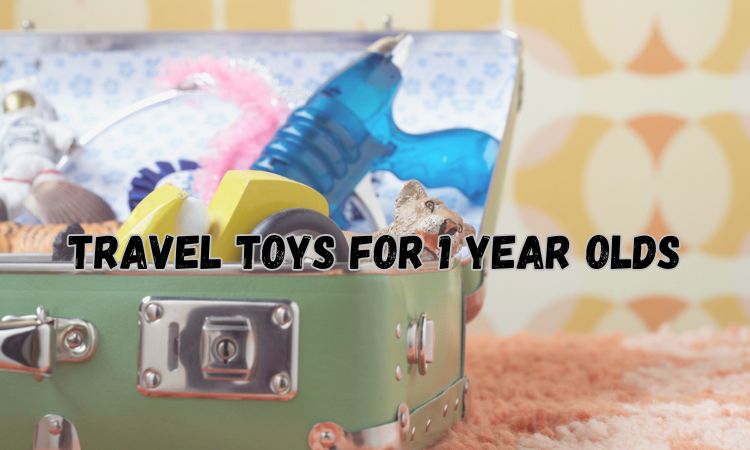Bringing your newborn home is a joyful experience, but it also comes with a whirlwind of questions—diapering is no exception. One common concern many parents share is: when to use diaper cream on newborn babies. Is it necessary from day one, or should you wait until signs of irritation appear?
In this guide, we’ll walk through the basics—when to use diaper cream, how to apply it correctly, and a few tried-and-true tips to help prevent rashes in the first place. Let’s make diaper duty a little easier for you—and a lot more comfortable for your little one.

Do All Newborns Need Diaper Cream?
Diaper cream acts as a protective barrier between your baby’s sensitive skin and the moisture that can build up inside a diaper. It helps prevent and soothe diaper rash by shielding the skin from irritants like urine, stool, and friction—things that can easily lead to redness, chafing, and discomfort.
That said, not all newborns need diaper cream right from the start. If your baby’s skin looks healthy—meaning no signs of redness, bumps, or irritation—you likely don’t need to use it at every change. In fact, applying it too often when there’s no irritation might do more harm than good by clogging pores or disrupting your baby’s natural skin balance.
Still, there are times when a regular layer of cream is helpful. If your newborn has especially sensitive skin, goes through frequent bowel movements, or is already showing signs of mild irritation, using a gentle diaper cream at every change can help keep things calm and comfortable.
When to Use Diaper Cream on a Newborn
You see, deciding when to use diaper cream on a newborn depends on your baby’s individual needs. Here are some scenarios where applying diaper cream can be helpful:
- At the First Sign of Redness or Irritation: If you notice any redness, small bumps, or areas of discoloration on darker skins, especially around the buttocks or genital area, it’s a good idea to apply a thin layer of diaper cream. This can help soothe the skin and prevent further irritation.
- During Bouts of Diarrhea or Teething: Babies often experience more frequent bowel movements during these times, increasing the risk of diaper rash. Using a protective cream can act as a barrier against moisture.
- When Using Antibiotics: Antibiotics can disrupt the natural balance of bacteria, sometimes leading to diaper rashes. Applying diaper cream can offer protection during this period.
- Overnight: Since diapers are typically changed less frequently at night, applying a barrier cream before bedtime can help protect your baby’s skin from prolonged exposure to moisture.
- When Using Cloth Diapers: If you’re using cloth diapers, which sometimes cause more friction, a cream can add a bit of extra cushioning protection.
How to Apply Diaper Cream Properly
Begin by gently cleaning your baby's skin with a soft cloth or an unscented baby wipe. Pat the area dry, and avoid rubbing, as it can worsen the irritation. Then, take a small amount of diaper cream and apply a thin, even layer to the affected areas, especially in the skin folds. Remember, don’t apply too much; thicker layers aren’t more effective.
Applying diaper cream might seem pretty straightforward, but a few small steps can make a big difference in how well it works—and how comfortable your baby feels afterward.
Here’s a simple step-by-step guide to help you apply diaper cream the right way:
1. Start with a Clean, Dry Bottom
Before you reach for the diaper cream, make sure your baby’s skin is clean. Gently wipe the diaper area with fragrance-free baby wipes or a soft, damp cloth. If there’s any residue left from a previous cream, wipe it away gently—built-up product can trap moisture and lead to more irritation.
Then, let the area dry completely. You can pat it gently with a soft towel or give your baby a few moments of diaper-free time to air things out.
2. Use a Pea-Sized Amount (More Isn’t Always Better)
A thin layer is all you need! Take a small amount—about the size of a pea—and apply it gently to any areas that look red or irritated, or wherever you want to prevent moisture buildup (usually the bottom, genitals, and between the thighs).
For baby girls, apply the cream around the vulva, avoiding the vaginal opening. For baby boys, apply it to the scrotum and around the penis, taking care not to apply cream inside the foreskin if uncircumcised.
3. Apply with Clean Fingers or a Cream Applicator
Clean hands are important here—you’re dealing with sensitive skin. You can use your fingers, or if you prefer, there are baby-safe cream applicators that help spread the product evenly without mess.
Either way, make sure you’re applying gently. You don’t want to rub the skin too hard, especially if it’s already a bit raw.
4. Put on a Fresh Diaper (But Not Too Tight!)
Once the cream is on, go ahead and put on a clean diaper. Just make sure it’s snug, not tight. A too-tight diaper can trap moisture or cause friction—two things you’re trying to avoid in the first place.
Bonus Tip: Use a Soothing Toy to Keep Baby Calm
Some babies get a little squirmy during diaper changes, especially when they’re already feeling uncomfortable from a rash. That’s where a soothing toy like the Alilo baby rattle can help.
This adorable bunny-shaped rattle has an easy-to-grip handle that’s perfect for tiny hands. Your baby can shake it to enjoy 66 different natural sounds, and the soft, RoHS-certified silicone bunny ears light up in seven vibrant colors.
Plus, it doubles as a music player preloaded with nursery rhymes, stories, and lullabies, so while you’re applying diaper cream, your baby can stay entertained and relaxed, making the whole diaper change smoother—for both of you.

Tips for Diaper Rash Prevention
Diaper rash is super common—and totally normal—especially in those early months when your baby’s skin is still adjusting to life outside the womb. But with a few simple habits, you can help prevent most rashes before they start.
Change Diapers Often
This one’s big. Leaving a wet or soiled diaper on for too long is one of the main causes of diaper rash. Try to check your baby’s diaper every couple of hours and change it promptly—especially after poops.
Let the Skin Breathe
Giving your baby a little diaper-free time each day can work wonders. Lay them on a waterproof mat or towel and let their skin air out for a few minutes. Even just 5–10 minutes here and there helps reduce moisture buildup.
Be Gentle with Wipes
Some baby wipes—especially those with fragrance or alcohol—can be irritating to sensitive newborn skin. Look for gentle, unscented wipes, or try using a soft cloth with warm water for a more soothing clean.
Use Diaper Cream Preventively (When It Makes Sense)
You don’t have to use diaper cream at every change but applying a thin layer before bedtime or during times when your baby’s skin is more vulnerable (like during teething or antibiotic use) can offer helpful protection.
Choose the Right Diapers for Your Baby
Not all diapers are created equal. A snug but comfortable fit helps prevent rubbing and irritation in the first place, and some babies do better with certain brands or types (like fragrance-free or extra-breathable options). If you notice recurring irritation, try switching to a different kind—or give cloth diapers a go if you’re open to it.
Keep It Clean—but Don’t Overdo It
Bathing your baby too often can actually dry out their skin and make it more sensitive. Stick to once-a-day baths or every other day, and always use a mild, fragrance-free baby cleanser.
Conclusion
Knowing when to use diaper cream on newborn is essential for protecting your baby’s delicate skin and keeping them comfortable. As we’ve learned, not all babies need cream at every diaper change, but applying it at the right times, such as when you see early signs of redness or during high-risk situations like nighttime or teething, can prevent irritation. When used correctly, along with preventive tips like frequent diaper changes and allowing diaper-free time, you can help keep your baby’s skin soft, dry, and rash-free.
FAQs
When can I use baby cream on my newborn?
You can begin applying baby lotion or cream to your newborn’s skin if it appears dry, flaky, or irritated. Opt for a gentle, fragrance-free moisturizer specifically formulated for infants. It’s advisable to wait until after the umbilical cord stump has fallen off and the skin has adjusted to the external environment, typically around 4 to 6 weeks of age. However, if your baby’s skin is dry before this period, using a mild, unscented lotion is generally safe.
Do you put diaper cream on after every diaper change?
Not necessarily. If your baby’s skin is healthy and shows no signs of redness or irritation, applying diaper cream at every change isn’t required. However, if your baby has sensitive skin, is prone to diaper rashes, or during periods of frequent bowel movements (such as teething or illness), using a thin layer of diaper cream at each change can help prevent irritation.
When to use diaper cream vs powder?
Diaper cream is best used when you want to create a protective barrier on your baby’s skin to prevent or treat diaper rash. It’s particularly effective for soothing existing irritation. Baby powder, especially talc-free or cornstarch-based powders, can help absorb excess moisture and reduce friction, which may prevent rashes. However, powders should be used cautiously to avoid inhalation risks and are generally less favored than creams for treating diaper rash.







Share and get 5% off!
Simply share this product on one of the following social networks and you will unlock 15% off!